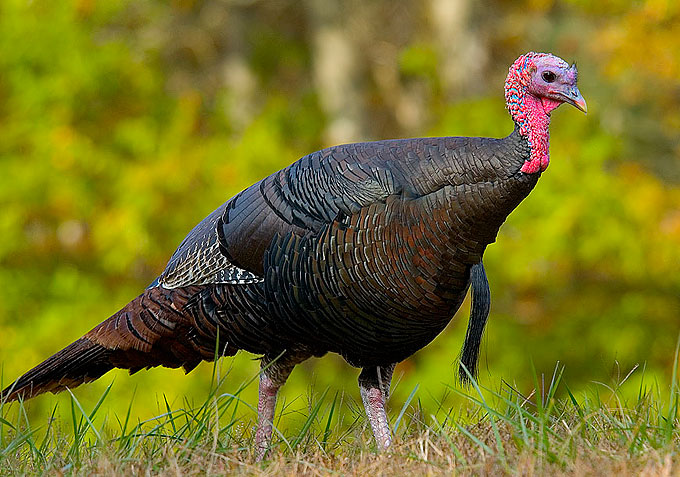Turkey Time: Spotlighting the Wild Turkey
by Meaghan Lyon, CWF Biologist

Over the years, the wild turkey (Meleagris gallopavo) has been widely domesticated for food and has become part of this country’s heritage for Thanksgiving dinner. There is evidence that Native Americans have been hunting turkeys as early as 1000 A.D. Each year, over 46 million turkeys are eaten each year on Thanksgiving – but how much do you really know about the turkey?
Instead of our holiday emblem, the wild turkey nearly found a drastically different role in American culture. Ben Franklin proposed it to be the official bird of the United States, and though some say he did it in jest, he praised the turkey as “a true original native of America…a bird of courage…and a much more respectable bird” than the bald eagle!
In the early 1900’s, the wild turkey was nearly wiped out from overhunting, but today there are wild turkeys in nearly every state. Turkeys can live between 3-5 years and have over 3,000 feathers at maturity. Despite being the heaviest bird among the family of Galliformes or ground fowl, the turkey can fly at an astonishing speed of 55 mph (in short spurts) and can run up to 20 mph.

Turkeys have excellent sight with color vision and they are able to see movement over 100 yards away. Turkeys flock together during the day and then roost in groups during the night on tree branches. These special birds even have a dance named after them, the turkey trot!
Consider this an ode to the turkey, the main dish many households are so thankful for each year!
Meaghan Lyon is a biologist with Conserve Wildlife Foundation.
Discover more from Conserve Wildlife Foundation of NJ
Subscribe to get the latest posts sent to your email.